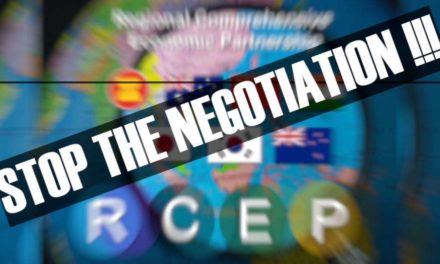Larry Lohmann*
Ask anybody what Mexico’s most famous exports are these days and the answer is likely to come with a sardonic smile and a roll of the eyes northward: people and drugs.
Now the country has a new export product, also a legacy of neoliberalism and the habit of Northern countries to offload their problems onto the global South: pollution rights.
Since 2006, Mexico has been shipping pollution rights to Spain, the UK, Switzerland, France, Japan and The Netherlands. Companies that buy the rights – power producers such as Iberdrola or Electrabel, for example, or cement manufacturers like CEMEX – are relieved of legal obligations, under European and Japanese climate laws, to reduce carbon dioxide pollution. Because the pollution rights that Mexico sells are cheap, the firms save millions and get to delay global warming action for years.
Mexico’s pollution rights are also a hot commodity in the financial markets. Private banks like BNP Paribas and Credit Suisse and middlemen and traders like Cargill, AgCert and Gazprom Marketing & Trading are buying Mexico’s pollution rights in order to speculate and sell to third parties. And why not? Prices are volatile; a lot of money can be made. And if the global market in greenhouse gas pollution rights becomes as big as some say it will – trillions of dollars – no one on Wall Street or in other financial centres can afford to be left out.
How does the trade work? The idea is simple. If greenhouse gas emissions have to be cut under European or Japanese law, and industrialized countries don’t want to pay the costs of doing so, why not make reductions where it is cheaper to do so, in countries like China or Mexico? Industries in those countries can then make money by selling the reductions to the North.
Who benefits in Mexico? Well, if you’re a dirty industry, you’ll have a lot of emissions to cut and you can make a lot of money. So it’s no surprise that more than two dozen giant hog farms operated by Granjas Carroll de Mexico, a subsidiary of the US-based Smithfield Farms, are earning extra revenue by capturing the methane given off by pig excrement and burning it. And because methane is a much more dangerous greenhouse gas than carbon dioxide, burning off just one ton of methane in Puebla or Veracruz entitles you to sell rights to release 20 tons of CO2 in Europe.
If you happen to produce a substance that is an even more potent greenhouse gas, you – and the consultants you hire from the US, Europe or Japan – can make even more money. Take Quimobasicos of Nueva Leon, Mexico’s biggest exporter of pollution rights. Merely by destroying a few thousand tons of a by-product gas called HFC-23, Quimobasicos is set to sell over 30 million tonnes of carbon dioxide pollution rights to Goldman Sachs, EcoSecurities and the Japanese electricity generator J-Power. Doing so costs the company something like 3 pesos per ton of CO2 “equivalent”, which, at current prices, it – or the middlemen it sells to – can then retail abroad for over 200 pesos a ton.
Small wonder that companies and countries around the world are trying to figure out how dirty they can be so that they can then make money from cleaning up. Small wonder, too, that the new market fails to benefit the truly green. Communities that live low-carbon lifestyles, or who fight to keep polluting companies or extractive industries out of their regions, are just not dirty enough to cash in on the trade. Nor do they have the money to grease regulatory wheels and hire the expensive consultants that you need to find your way into the new market.
In fact, the pollution rights market is actually harming such communities. In the Tehuantepec isthmus, many indigenous communities have cheaply signed over land to private wind farm developers from Spain and Mexico, unaware that the companies are likely to make millions not only from electricity generation, but also from using or selling pollution rights in Europe.
What’s the role of the coming UN climate summit in Cancun in all this? Don’t expect too many of the governments involved to call for an end to this destructive pollution trade. The UN, after all, helped set the whole market up back in 1997 in Kyoto, and a lot of people are making profits out of it.
In fact, Cancun may make things even worse by allowing the carbon in native forests to be sold on the pollution market. That could set up what one indigenous peoples’ network calls “potentially the biggest land grab in history”.
With the stakes this high, the protests converging on Cancun in December become even more important. Stay tuned.
*Larry Lohmann works with The Corner House, a UK-based solidarity and research organization, and helped edit the book El Mercado de Emisiones: como funcione y por qué fracasa.








